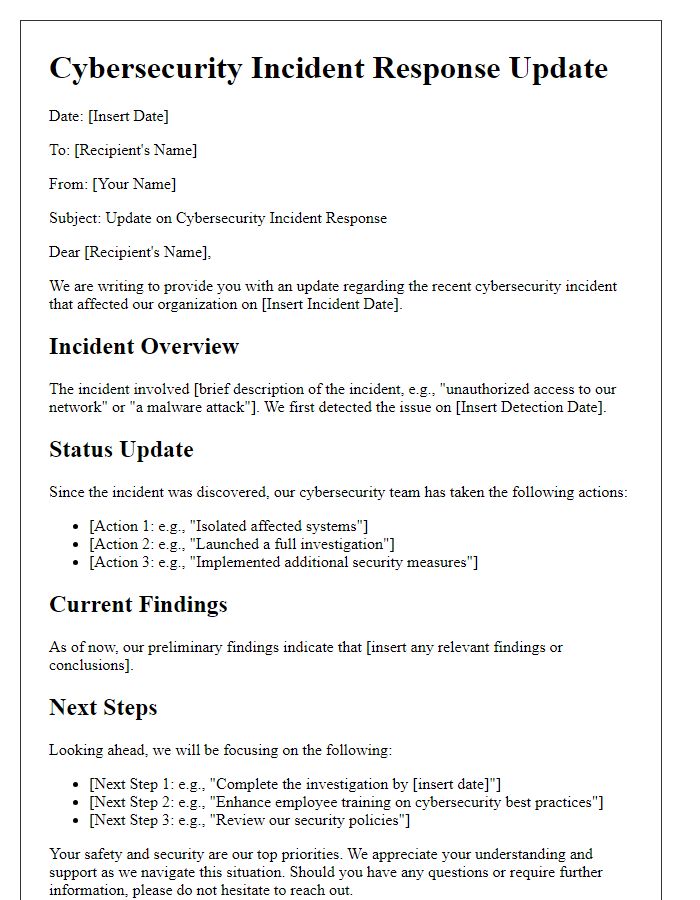Hey there! As our digital landscape becomes increasingly complex, it's crucial to stay informed about cybersecurity awareness. We all have a part to play in protecting not just our data, but also our community's information. In this article, you'll discover essential tips and best practices to bolster your online safety and protect against potential threats. So, why not dive in and learn more about how you can enhance your cybersecurity knowledge?

Introduction to Current Threat Landscape
The current threat landscape in cybersecurity presents an increasing array of challenges and risks for organizations worldwide. Recent data from Cybersecurity Ventures predicts that cybercrime costs will reach $10.5 trillion annually by 2025. Major events such as the 2020 SolarWinds attack demonstrated how sophisticated supply chain vulnerabilities were exploited, affecting thousands of companies, including government agencies in the United States. Ransomware attacks, notably those targeting Colonial Pipeline in May 2021, underline the critical need for robust incident response strategies, as they disrupted fuel supplies across the East Coast. Notable malware variants like Emotet and Locky continue to evolve, showcasing the persistent threat from cybercriminals seeking financial gain. Awareness of these trends is critical for enhancing organizational preparedness and resilience.
Key Security Best Practices
Regular cybersecurity awareness updates play a crucial role in protecting sensitive data and maintaining the integrity of digital systems. Implementing strong password policies is essential; for instance, using complex passwords that include a mix of numbers, letters, and special characters, ideally at least 12 characters long. Multi-factor authentication (MFA) adds an extra layer of security by requiring additional verification methods, significantly reducing the risk of unauthorized access to accounts, especially important for platforms like online banking and corporate email systems. Phishing attacks, which target untrained users via deceptive emails and links, can be mitigated by educating employees on recognizing suspicious signs, including unexpected attachments or unfamiliar sender addresses. Regular software updates and patch management are vital to safeguarding devices from vulnerabilities; for example, updating operating systems and applications can protect against exploits that could lead to data breaches. Regular backups of critical data ensure recovery in the event of ransomware attacks, a prevalent threat in today's digital landscape. Encouraging the use of secure Wi-Fi connections, particularly in public spaces, can prevent unauthorized data interception, further enhancing overall cybersecurity posture.
Updates on Security Policies and Procedures
Recent updates to cybersecurity policies and procedures emphasize enhanced data protection measures in response to the increasing number of cyber threats faced by organizations. Specifically, policies now require multifactor authentication (MFA) for accessing sensitive company data, aiming to strengthen access control. Furthermore, the frequency of mandatory cybersecurity training sessions has been increased to quarterly instead of annually, ensuring employees at all levels stay informed about the latest phishing tactics and secure data handling practices. New protocols dictate regular audits of network systems, aiming to identify vulnerabilities and mitigate risks proactively. Additionally, reporting procedures for suspicious activities have been streamlined, encouraging immediate action and communication among employees. Overall, these modifications reflect a commitment to safeguarding digital assets and protecting sensitive information against evolving cyber threats.
Importance of Employee Vigilance and Training
Cybersecurity awareness is crucial for all employees in today's digital landscape, especially with the rise of sophisticated threats such as phishing attacks, ransomware incidents, and data breaches. Regular training sessions, targeted at topics including password management and recognizing suspicious emails, enhance employee vigilance. Studies indicate that 90 percent of successful cyber attacks stem from human error, making training programs essential. Organizations must implement best practices, such as two-factor authentication and secure file-sharing methods, to safeguard sensitive information. Furthermore, awareness campaigns can promote a culture of security, empowering employees to recognize and report potential threats promptly, thereby reducing the risk of significant operational disruptions.
Contact Information for IT Support and Reporting Incidents
Cybersecurity awareness is crucial for all employees, especially in organizations like TechCorp, which deals with sensitive data. For any IT support needs, employees can reach the IT Helpdesk at helpdesk@techcorp.com or call 1-800-555-0199 during business hours (8 AM to 5 PM EST). In case of suspicious incidents, such as phishing emails or unauthorized access attempts, employees are encouraged to report immediately to the Incident Response Team via incidentreport@techcorp.com. Prompt reporting ensures rapid mitigation of potential threats, safeguarding both personal and organizational data. Regular training sessions and updates will continue to enhance awareness among the workforce, emphasizing the importance of vigilance in maintaining cybersecurity integrity.













Comments